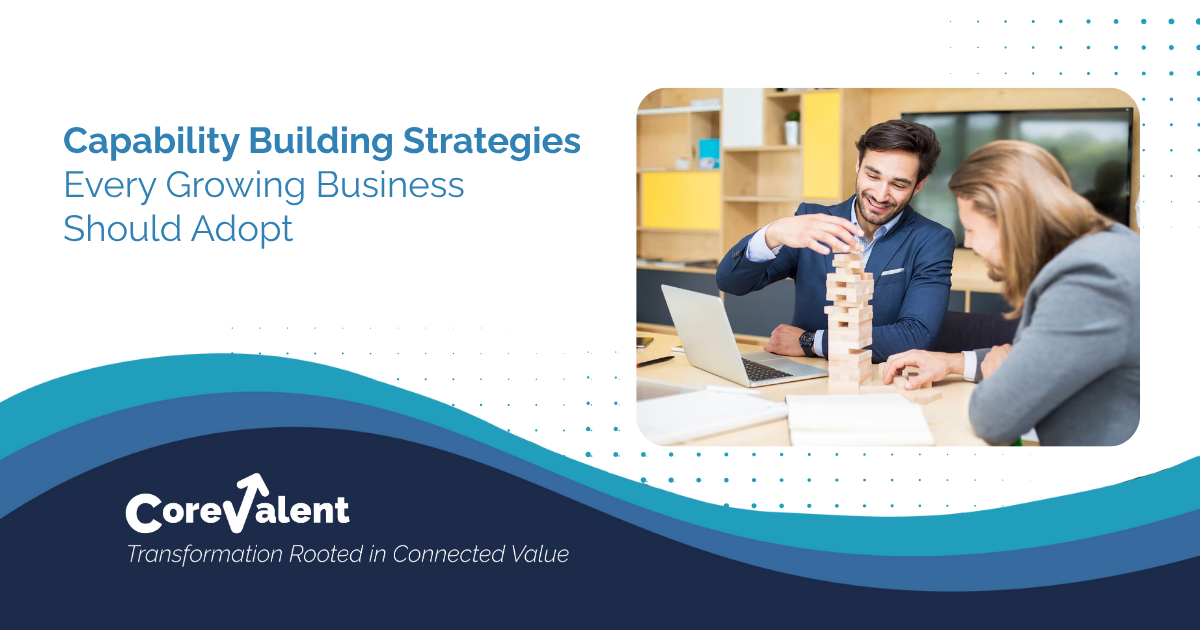To facilitate continuous capability building, it’s essential to offer a variety of learning opportunities and a supportive environment where growth feels natural — not forced.
Effective capability-building programs go beyond traditional training; they help organizations nurture the right mindsets, behaviors, and skills needed to scale successfully.
When learning becomes part of everyday workflows — through microlearning modules, on-the-job training, peer mentoring, and real-world problem-solving — it transforms how teams perform and adapt. This is the foundation of every strong business scaling strategy.
Scaling isn’t just about doing more; it’s about doing better, faster, and smarter — and that starts with people. Let’s explore the key capability-building strategies that empower organizations to grow sustainably and confidently.
1. Align Capabilities with Strategic Goals
Every successful scale-up begins with clarity. Before building new capabilities, businesses must first ensure alignment with their larger strategic goals.For example, if your company’s next phase focuses on digital innovation, capabilities should center around technology adoption, cross-functional collaboration, and agile decision-making. The goal is to ensure every department — from operations to marketing — is equipped to execute the larger mission seamlessly.
When capability-building aligns with strategy, growth stops being accidental — it becomes intentional.
2. Build Leadership Depth at Every Level
Scaling is rarely a problem of resources; it’s often a challenge of leadership readiness. Businesses that thrive during scale-up phases invest in leadership development not only at the top but across all levels of the organization.
This means developing decision-making confidence, fostering accountability, and creating leaders who can think both strategically and operationally. Effective leadership capability ensures that, as your business grows, every layer of management can uphold the same standards of excellence and agility.
(Learn more about Leadership Augmentation Services)
3. Focus on Process Maturity and Adaptability
Processes are the backbone of scalability. However, rigid processes can become bottlenecks. As businesses expand, they must re-examine workflows to introduce flexibility without losing control.
A scalable business process can handle increased complexity without sacrificing efficiency. This could involve integrating digital tools, redesigning workflows, or implementing a data-driven approach for faster, informed decisions.
Companies that periodically assess and adapt their operational frameworks are better positioned to sustain growth in dynamic markets.
4. Invest in Continuous Learning and Cultural Agility
A company’s ability to scale often depends on its people’s ability to learn. Investing in learning programs that go beyond technical training — focusing on strategic thinking, innovation, and change management — creates a resilient workforce that thrives amid transformation.
Equally important is cultivating a culture that values curiosity and experimentation. When employees are encouraged to adapt and innovate, they become active participants in the scale-up journey, not just executors of it.
5. Partner Strategically for Sustainable Scaling
No organization scales alone. Strategic partnerships can help fill capability gaps, accelerate learning, and bring external expertise into the fold. Whether it’s collaborating with consulting experts or technology providers, these partnerships extend your organization’s bandwidth to handle growth more effectively.
At CoreValent, our approach to capability building for business scale-up goes beyond traditional consulting. We focus on co-creating solutions that strengthen your team’s ability to execute transformation at scale — enabling your business to grow with confidence.
The Bottom Line
Sustainable growth doesn’t come from bigger budgets or faster execution alone — it comes from building the right capabilities at the right time. For leaders driving business transformation, the question isn’t whether capability building is necessary — it’s how strategically and consistently it’s done.
With a focused approach and the right partners, businesses don’t just grow — they scale smarter, stronger, and more sustainably.


